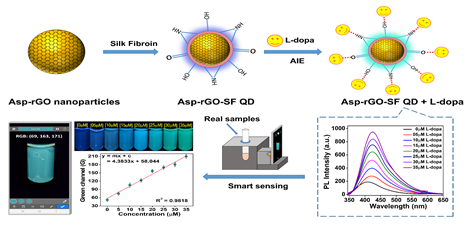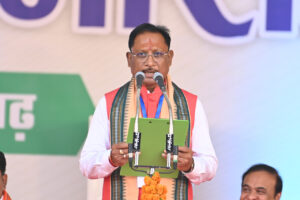New Delhi, August 28, 2024: Scientists have developed an affordable, user-friendly, portable smartphone-based fluorescence turn-on sensor system that can assist in managing Parkinson’s disease.
The sensor would help in accurately detecting the concentration of L-dopa in the body, thereby helping to determine the precise dosage required for effective control of the disease, sources in the Union Ministry of Science & Technology said.

Parkinson’s disease is marked by a continuous decrease in neuron cells, which leads to a significant reduction in dopamine (neurotransmitter) levels in our body. L-dopa is a chemical which is converted to dopamine in our body and so act as anti-Parkinson’s drugs.
It helps in compensating the deficiency of dopamine. As long as the correct amount of L-dopa is administered, the disease remains manageable.
However, due to the progressive nature of Parkinson’s, as the patient ages, more L-dopa is needed to compensate for the ongoing loss of neurons.
But too much of the L-Dopa can cause serious side effects like dyskinesia, gastritis, psychosis, paranoia, and orthostatic hypotension, while too little can lead to the return of Parkinson’s symptoms.
Considering the critical role of optimum level of L-dopa in therapy, it is essential to develop a simple, cost-effective, sensitive, and quick method for monitoring L-dopa in biological fluids.
Recently, Institute of Advanced Study in Science and Technology (IASST), an autonomous institute of the Department of Science and Technology developed an affordable, user-friendly, portable smartphone-based optical sensor system utilizing fluorescence turn-on mechanism to instantly detect low levels of L-dopa in biological samples.
The sensor made by coating a silk-fibroin protein nano-layer, derived from Bombyx mori silk cocoons, onto the surface of reduced graphene oxide nanoparticles. This system forms core-shell graphene-based quantum dots with outstanding photoluminescence properties, making it an effective fluorescent turn-on sensor probe for detecting L-dopa in real samples such as blood plasma, sweat, and urine within a linear range of 5 μM to 35 μM. The corresponding detection limits were determined to be 95.14 nM, 93.81 nM, and 104.04 nM, respectively.
The researchers have designed a smartphone-based electronic device with an electric circuit connected to a 365nm LED powered by a 5V smartphone charger. The whole setup is immersed in a dark chamber to isolate it from external light. Visual color changes during the sensing process were observed by illuminating the sensor probe with the 365 nm LED and capturing images with a smartphone camera. The RGB values from the images are used to evaluate L-dopa concentration using a mobile app. This simple, cost-effective, and rapid screening tool is crucial for on-spot analyte detection in remote areas lacking advanced equipment.
By detecting whether biological samples from the patient has low levels of L-Dopa, the sensor could help adjust the required dosage for effective control of the disease.
More Stories
Chief Secretary Amitabh Jain Creates History
Chhattisgarh Chief Secretary Amitabh Jain today created a history in the administrative cadre of the state by getting extension of service.
Sai Cabinet Approves Chhattisgarh State Logistics Policy-2025
For the overall development of the logistics sector in Chhattisgarh, the cabinet meeting held today under the chairmanship of Chief Minister Vishnu Dev Sai approved the Chhattisgarh State Logistics Policy-2025.
Chhattisgarh Input Subsidy Scheme to be Expanded
Taking a major decision in the interest of farmers, Chhattisgarh Cabinet, chaired by Chief Minister Vishnu Dev Sai, today decided to amend the state Krishak Unnati Yojana and expand the scope of the input subsidy scheme.
CM Sai Re-launches Free Shoes Scheme in Chhattisgarh
Chhattisgarh Chief Minister Vishnu Dev Sai today re-launched the ‘Charan Paduka Yojana’ by making women tendu leaf pluckers wear Charan Paduka in Jamgaon of Durg district.
Chhattisgarh CM meets Governor; Discusses important issues
Chhattisgarh Chief Minister Vishnu Dev Sai today met the Governor Ramen Deka and discussed various issues pertaining to the state.
Amid Controversy Chhattisgarh Health Minister calls on Governor
Amidst controversy over the activities of Chhattisgarh Health Department Health Minister Shyam Bihari Jaiswal today called on the Governor.


